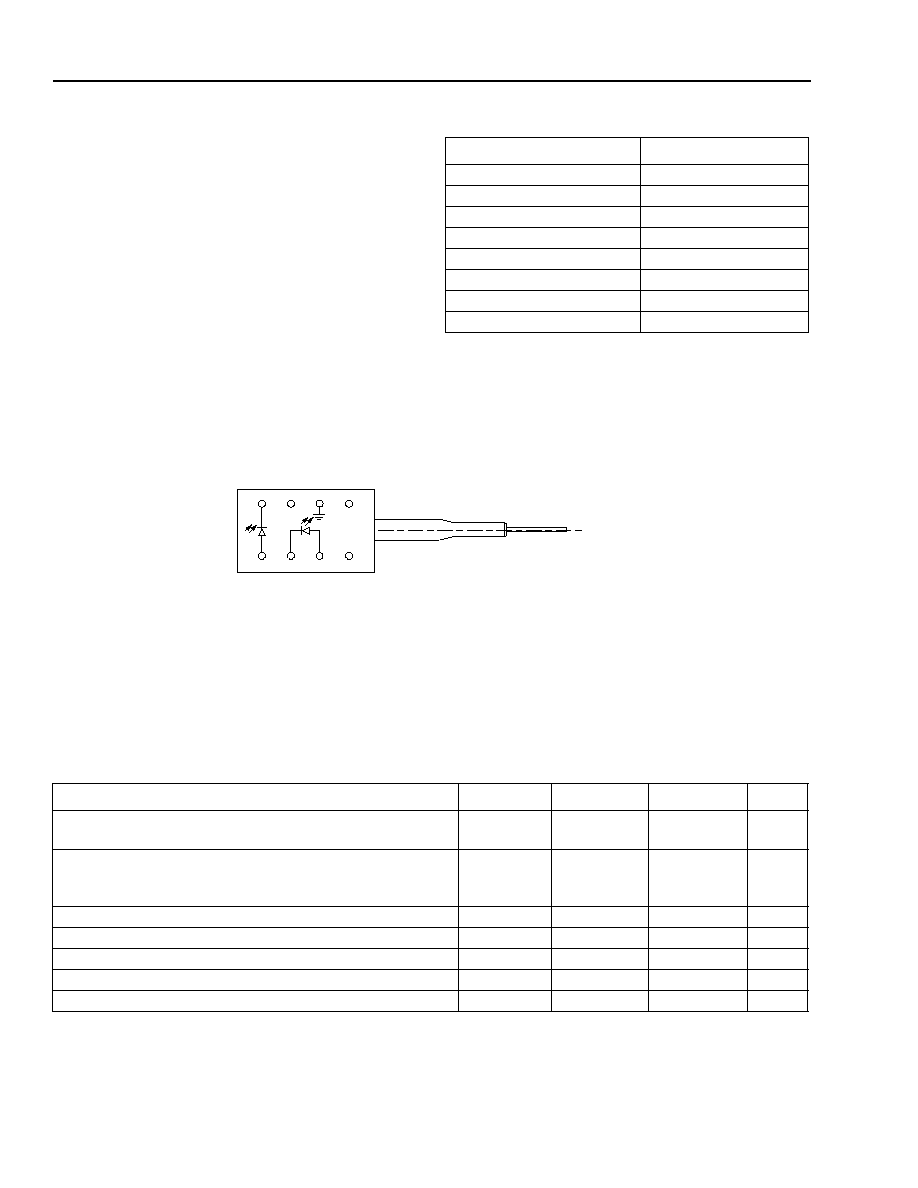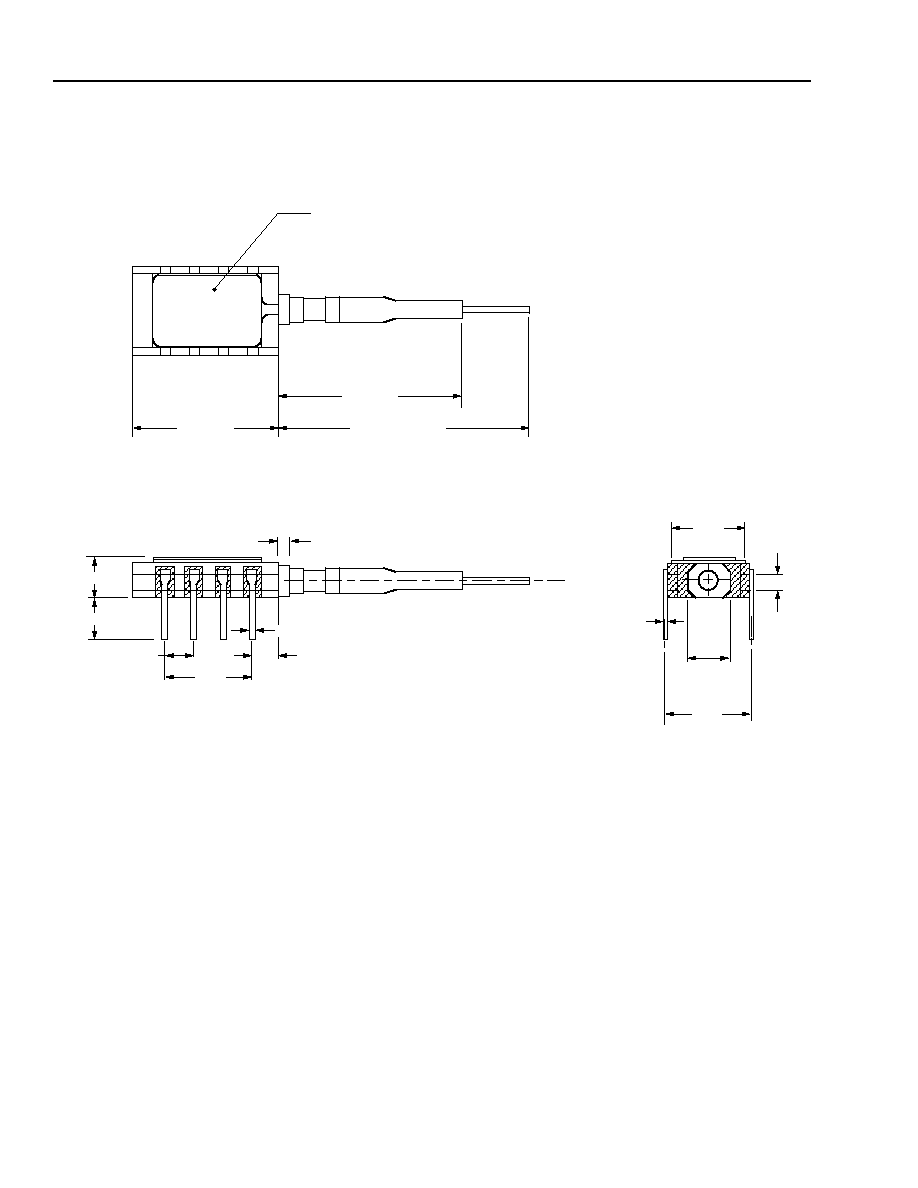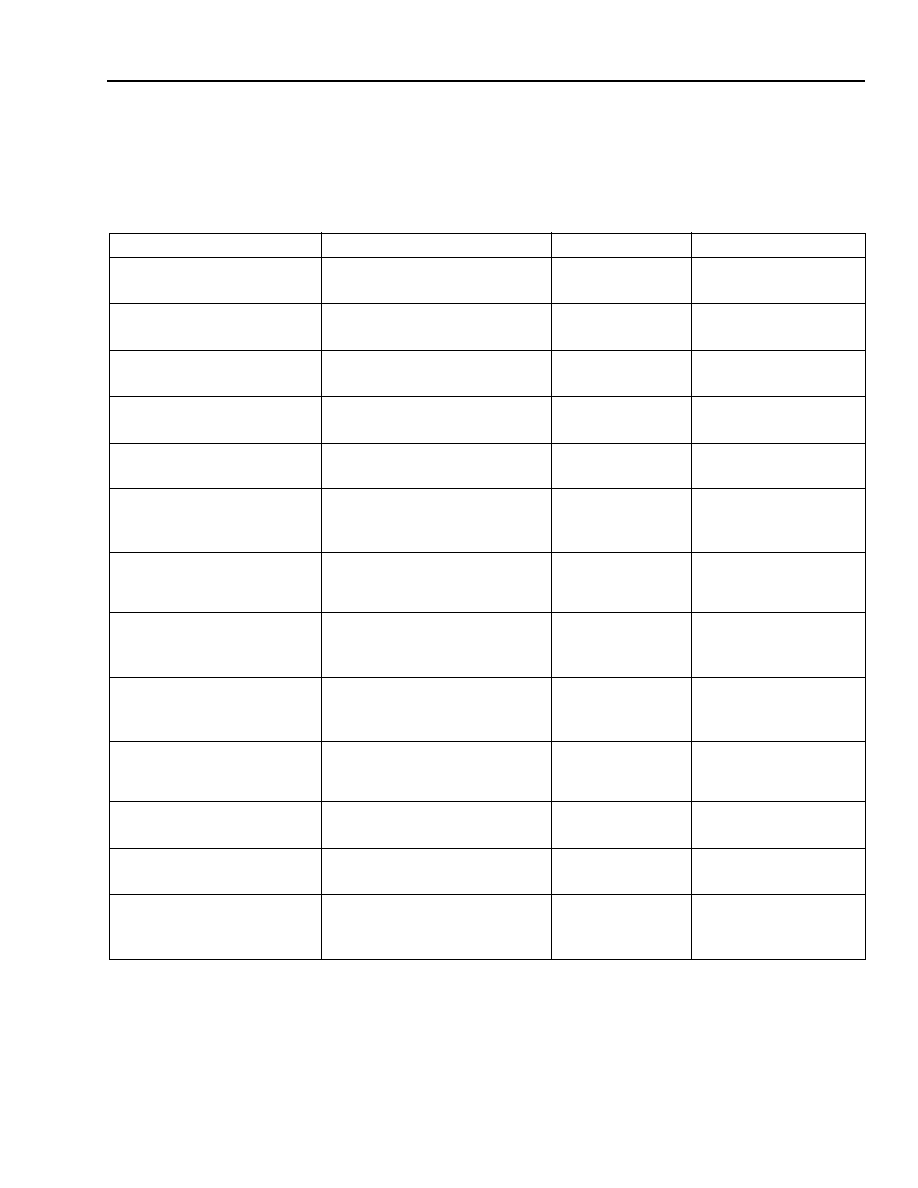 | –≠–ª–µ–∫—Ç—Ä–æ–Ω–Ω—ã–π –∫–æ–º–ø–æ–Ω–µ–Ω—Ç: D371-20B | –°–∫–∞—á–∞—Ç—å:  PDF PDF  ZIP ZIP |

D371-Type Digital Uncooled DFB
Laser Module
Data Sheet
January 1999
The low-profile D371-Type Laser Module is ideally suited for
short- and long-haul SONET and other high-speed digital
applications.
Features
s
Eight-pin package suitable for SONET applications
s
Narrow linewidth, distributed-feedback, multiquan-
tum-well (DFB-MQW)1.3
µ
m laser with single-
mode fiber pigtail
s
Wide operating temperature range:
≠40
∞
C to +85
∞
C
s
No TEC required
s
High output power: typical 2.0 mW peak power
coupled into single-mode fiber
s
Hermetically sealed active components
s
Internal back-facet monitor
s
Qualification program:
Telcordia Technologies
*
TA-983
*
Telcordia Technologies
is a registered trademark of Telcordia
Technologies, Inc.
Applications
s
Long-reach SONET OC-3/OC-12 systems
s
Telecommunications
s
Secure digital data systems
Benefits
s
Easily board mounted
s
Requires no lead bending
s
No additional heat sinks required
s
Pin compatible with industry-standard, 14-pin laser
module
s
Highly efficient DFB-MQW laser structure allows
for lower threshold and drive currents, and reduced
power consumption
Description
The D371-Type Uncooled Laser Module consists of a
laser diode coupled to a single-mode fiber pigtail.
The device is available in a standard, 8-pin config-
uration (see Figure 1 and/or Table 1) and is ideal for
long-reach (SONET) and other high-speed digital
applications.
The laser diode is a narrow linewidth (<1 nm) DFB-
MQW single-mode laser and an InGaAs PIN photo-
diode back-facet monitor in an epoxy-free, hermeti-
cally sealed package.

Data Sheet
D371-Type Digital Uncooled DFB Laser Module
January 1999
2
2
Agere Systems Inc.
Description
(continued)
The device characteristics listed in this document are
met at 2.0 mW output power. Higher- or lower-power
operation is possible. Under conditions of a fixed pho-
todiode current, the change in optical output is typically
±
0.5 dB over an operating temperature range of ≠40
∞
C
to +85
∞
C.
This device incorporates the new Laser 2000 manufac-
turing process developed by the Optoelectronic unit of
Agere Systems Inc. Laser 2000 is a low-cost platform
that targets high-volume manufacturing and tighter
product distributions on all optical subassemblies. The
platform incorporates an advanced optical design that
is produced on a highly automated production line. The
Laser 2000 platform is qualified for the central office
and uncontrolled environments, and can be used for
applications requiring high performance and low cost.
Table 1. Pin Descriptions
Pin Number
Connection
1
NC/reserved
2
Case ground
3
NC/reserved
4
Photodiode cathode
5
Photodiode anode
6
Laser diode cathode
7
Laser diode anode
8
NC/reserved
Figure 1. D371-Type Digital Uncooled DFB Laser Module Schematic, Top View
Absolute Maximum Ratings
Stresses in excess of the absolute maximum ratings can cause permanent damage to the device. These are abso-
lute stress ratings only. Functional operation of the device is not implied at these or any other conditions in excess
of those given in the operations sections of the data sheet. Exposure to absolute maximum ratings for extended
periods can adversely affect device reliability.
* Rating varies with temperature.
Parameter
Symbol
Min
Max
Unit
Maximum Peak Laser Drive Current or
Maximum Fiber Power*
I
OP
P
MAX
--
--
150
10
mA
mW
Peak Reverse Laser Voltage:
Laser
Monitor
V
RL
V
RD
--
--
2
20
V
V
Monitor Forward Current
I
FD
--
2
mA
Operating Case Temperature Range
T
C
≠40
85
∞
C
Storage Case Temperature Range
T
stg
≠40
85
∞
C
Lead Soldering Temperature/Time
--
--
260/10
∞
C/s
Relative Humidity (noncondensing)
RH
--
85
%
1-900 (C)
5
6
8
7
4
3
1
2

Data Sheet
January 1999
D371-Type Digital Uncooled DFB Laser Module
3
Agere Systems Inc.
Handling Precautions
Caution: This device is susceptible to damage as a result of electrostatic discharge (ESD). Take proper pre-
cautions during both handling and testing. Follow guidelines such as JEDEC Publication No. 108-
A (Dec. 1988).
Although protection circuitry is designed into the device, take proper precautions to avoid exposure to ESD.
Electro/Optical Characteristics
* 1 mW power option also available. See Table 4 for more information.
The slope efficiency is used to calculate the modulation current for a desired output power. This modulation current plus the threshold current
comprise the total operating current for the device.
V
R
= reverse voltage.
Table 2. Electro/Optical Characteristics
(over operating temperature range unless otherwise noted)
Parameter
Symbol
Test Conditions
Min
Typ
Max
Unit
Operating Temperature
Range
T
--
≠40
--
85
∞
C
Optical Output Power*
P
F
CW, nominal
--
2
--
mW
Threshold Current
I
TH
T = 25
∞
C
T = full range
4
2
11
--
15
50
mA
mA
Modulation Current
I
MOD
CW, P
F
= 2.0 mW, T = 25
∞
C
CW, I
MON
= const. T = full range
10
7.5
20
--
30
55
mA
Slope Efficiency
SE
CW, P
F
= 2.0 mW, T = 25
∞
C
67
--
200
µ
W/mA
Center Wavelength
C
P
F
= 2.0 mW, CW
1280
--
1335
nm
Spectral Width (≠20 dB)
P
F
= 2.0 mW, 622 Mbits/s
--
--
1
nm
Side-mode Suppression
Ratio
SMSR
CW, P
F
= 2.0 mW
30
40
--
dB
Tracking Error
TE
I
MON
= constant, CW
--
0.5
--
dB
Spontaneous Emission
P
TH
I = (0.9) I
TH
--
--
50
µ
W
Rise/Fall Times
t
R
, t
F
10%--90% pulse
T = 25
∞
C
--
0.25
0.5
ns
Forward Voltage
V
F
CW
--
1.1
1.6
V
Input Impedance
R
--
3
--
8
Monitor Current
I
MON
V
R
= 5 V
50
--
1000
µ
A
Monitor Dark Current
I
D
V
R
= 5 V
--
10
200
nA
Wavelength Tempera-
ture Coefficient
--
--
--
0.09
0.1
nm/
∞
C

Data Sheet
D371-Type Digital Uncooled DFB Laser Module
January 1999
4
Agere Systems Inc.
Outline Diagram
Dimensions are in inches and (millimeters).
1
0.010
(0.254)
0.30
(7.62)
0.29
(7.37)
0.085
(2.16)
0.17
(4.32)
0.20 (5.00)
0.165 (4.20)
0.016 (0.410)
0.100 (2.54)
0.300
(7.62)
0.110 (2.79)
0.045 (1.143)
4
3
2
1
5
6
7
8
39.37 (1000) MIN
PIGTAIL LENGTH
0.52 (13.2)
1.06 (27.0)
MIN
TRADEMARK, CODE, LASER SERIAL NUMBER,
AND/OR DATE CODE IN APPROXIMATE AREA SHOWN
1-899 (C).f

Data Sheet
January 1999
D371-Type Digital Uncooled DFB Laser Module
5
Agere Systems Inc.
Qualification Information
The D371-Type Laser Module has completed and passed the following qualification tests and meets the intent of
Bellcore TR-NWT-000468 for interoffice environments and TA-TSY-000983 for outside plant environments.
Table 3. D371-Type Laser Module Qualification Test Plan
Qualification Test
Conditions
Sample Size
Reference
Mechanical Shock
500 G for P/F
1,500 G for information
11
MIL-STD-883
Method 2002
Vibration
20 g, 20 Hz--2,000 Hz
11
MIL-STD-883
Method 2007
Solderability
--
11
MIL-STD-883
Method 2007
Thermal Shock
Delta T = 100
∞
C
11
MIL-STD-883
Method 2003
Fiber Pull
1 kg; 3 times for P/F
2 kg; 3 times for information
11
Telcordia Technologies
983
Accelerated (Biased) Aging
85
∞
C, 5,000 hrs.
25
Telcordia Technologies
983
Section 5.18
85
∞
C Storage
1,000 hrs. for provisional qual.
2,000 hrs. for P/F
5,000 hrs. for information
11
Telcordia Technologies
983
Temperature Cycling
500 cycles for P/F
1,000 cycles for information
11
Telcordia Technologies
983
Section 5.20
Cyclic Moisture Resistance
10 cycles for P/F
20 cycles for information
11
Telcordia Technologies
983
Section 5.23
Damp Heat
40
∞
C, 95% RH
1,000 hrs. for provisional qual.
1,344 hrs. for P/F
11
MIL-STD-202
Method 103
Internal Moisture
<5,000 ppm water vapor
11
MIL-STD-883
Method 1018
Flammability
--
--
TR357
Sec. 4.4.2.5
ESD Threshold
--
6
Telcordia Technologies
983
Section 5.22




